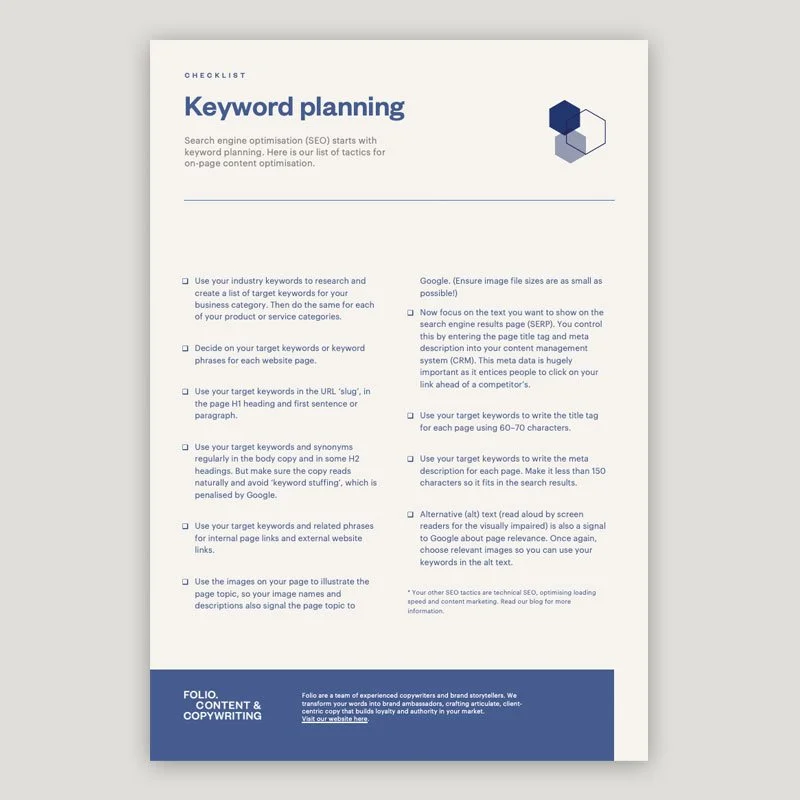SEO copywriting 101
Finding the right product or service online is like finding a needle in a haystack. Search Engine Optimisation (SEO) – and its companion SEO writing – is a complex and a highly specialised field, requiring a multi-level strategy for best results.
Optimised code, loading time, mobile-friendliness, keyword choice, image naming, regular updates and link-building are but a few considerations.
While developers are responsible for the code, copywriters are in charge of on-page SEO – the text content and metadata. Here is a brief overview of good practice when optimising website copy for search engine visibility:
Define your keywords
These are the words and phrases your clients type into a search engine to find products or service like yours – and they are often different from what you might first imagine.
For example, while an obvious name for an accountancy services page might be ‘tax accounting services’, this phrase receives fewer than ten searches a month in New Zealand. The terms’ tax accountant’ and ‘tax accounting’, by comparison, each have 170 searches a month.
Create keyword families for blog topics
For each of your content topic areas, create keyword families (also known as keyword niches or themes). Keep these in mind as you write and label your blogs and articles, as by targeting longtail keywords, your blog will more likely appear on page one of a Google search.
Where to use keywords
Use your target keywords or keyword phrases on each page in the H1 and H2 headings, first paragraph, body copy, image names, alt text and metadata.
Be authentic and natural
Search engines can assess ‘keyword stuffing’ and take points off. And pages that use too many keywords – placing search engine rankings ahead of user experience – sound repetitive, creating a poor reader experience.
Create a list of tags
Based on your keyword list, create a set of clearly defined tags for page sets (also called categories or filters). Most commonly applied to blogs, tags help search engines and users search and index your content. The number of tags will depend on your topics, but aim to keep the list as short as possible.
Good structure
Create a clear website structure (also called site map or information architecture), ideally with the top menu pages named using appropriate keywords. For example, instead of ‘Services’ use ‘SEO writing’.
Landing pages
Create a landing page (also known as a pathway or index page) for each main category of content. This provides an authentic keyword-rich page to describe your service or product to your audience.
—
By writing well, using words your clients use, you help both them and search engines understand what you do and what you can offer. After all, the engines’ job is to match user queries with the most appropriate providers.


